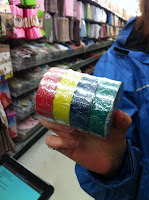June 23 (our last class!)
Case study presentations:
Adele: Jay - Grade 5 student who is oppositional. He has very low reading and writing skills. Lives in a difficult community. Behavioural Psychologist is pushing for him to use an iPad to provide apps to meet his interests. Apps tried: Unblock Me, Rush Hour and Busy Harbour, visual apps: Pic Collage, Book Creator, and Photo Booth.
Kari: Justin: - Grade 3 student who is struggling academically. He is on an IPP for Language Arts and Math. Hard worker and wants to please. He can be aggressive and suffers from anxiety. Asus Tablet was used. Apps tried: Whiteboard, (Love the video!) Sight Words, (Another great video!) He learned 31 words! That's very exciting stuff!
Heather: Ben (aka Liam) - Grade 5 student who is really bright, emotionally immature. He has had loads of interventions. Diagnosed with a learning disability. iPad was introduced. He used the iPad's text to speech option. He used Dragon dictation and Typ-O and loved it. The end result was quite amazing! How effective was that!
Amy: Child "T" - He is 5 years old and is entering Primary next year. He is a happy go lucky guy with a nice sense of humour. Apps used: ABC Tracing, Sound Sorting Beginning Sounds and ABC Magic2. Mom wanted him to be engaged for the summer. Comments from Mom were really positive with "T"'s motivation.
Shauna: C - Grade 7 student who is struggling in Reading, Writing and Math. She is disorganized. She has been diagnosed with learning disability, possibly with dyslexia. In 2010 she was diagnosed with ADD. Apps tried: Dragon Dictation. As I was watching Shauna's presentation, I wondered if Logan would use it. I like the idea that the output has a better flow. I do wonder about the clarity of Logan's voice, though. It might might not pick up on his voice.
Jeff: Child "R" - Grade 12 student who seems to be quite an enigma. He seems disengaged and lacks self-confidence; he is disorganized and was diagnosed with ADD. He has difficulty with written expression but is very competent in technology, almost too competent. (Yikes!) Inspiration was introduced to give him a visual way to organize his learning. It's quite apparent "R" thought Inspiration was a great way to organize his thoughts. What a well written response! He's great!
Rebecca: Grade Two student that is diagnosed with Autism. He is a happy little boy who has some difficulties with social interactions with his peers. He does experience some difficulty in reading. His reading level is A. The iPad was introduced. ABC Pocket phonics was used. It works on letter sounds Great little videos! What a little sweetheart. It was very clear he loved the apps introduced.
Anne: Will - Seventeen year old boy diagnosed with autism who is non-verbal. He is considered highly affected on autism scale. "Students stayed until 21 in elementary"???? That is a shocking statement. I am sitting here shocked! Apps used: Book Creator. Mom made up a social story about moving. He used Jigsaw puzzle, My Brushes, Doodle Dandy. This quite a story. I would love to hear more. 15 minutes really isn't long enough to get the real story.
Alana: Rex - Grade 4 student who is in French Immersion. He gets frustrated easily. He has been diagnosed with ADHD and is on medication. Cowriter, Tumblebooks, Kidspiration and Into the Book has worked well for him.
Jenn: "J" - Grade 8 student who's struggling with many Language based areas and Math. He often feels anxious. He often gives up before he tries. Lots of support in place. He is hesitant to use technology. iPad was recommended. Tried Google calendar, which is easy to use and visually appealing. It's free so you can't really beat the price. Soshiku was also used. It was easy to access and much easier to use.
Jackie: "Student A" - Grade 7 student who is functioning at around 4 years old. One type of AT that was used was Tiny Eye. This is an interactive SLP program. It has a rewards page that could be a game or music. It consists of different games. The students can see each other. You can see the sounds being made. This sounds really neat! I have a student in my class who would love this program.
Amy: Justin - Grade 7 student who is diagnosed with Mild spastic Quadriplegic Cerebral Palsy. He is reading at a Level H. Technology used was Raz-Kids. It's nice that it's based on the PM Benchmark system. So, it's easy to tie into our leveled books. He has moved up four levels in reading! Wow! That is really awesome, really nice progress. That is a huge jump. That kind of jump is very rare!
Janna: "K" is a Grade 10 student who has been diagnosed with a learning disability and a visual learning disability. She's struggling this year at Sacred Heart. She has extreme anxiety around any environments other than school and home. She's very artistic and is involved in circus lessons (neat).
An iPad was introduced. Apps used: Tools4students and gFlash + Flashcards & Tests. Tools4students is a group of graphic organizers. "K" really liked this because she could organize her thoughts. gFlashcards was a nice way to study. You could make up your questions such as multiple choice."K" loved using the technology.
Jillian: Ashley - She is in Grade One and is severely delayed. Has difficulties with receptive and expressive language. She has an IPP for Language Arts and Math, Functional Language/Communication. She's a happy little girl who loves to joke. Apps used: Toca Train and Book Creator. Toca Boca is an app that works on functional activities. Ashley loved Book Creator. What a cutie! She is so pleased with her results! She definately wins the cutest award. I could take her home. Look at her language, really great job!
Excellent presentations! What a day!























